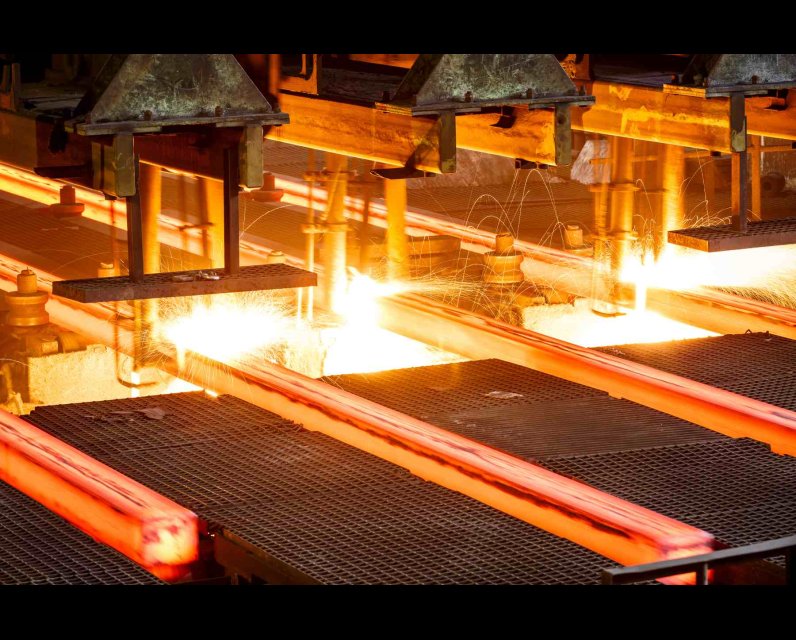The Steel Tariffs Doubled. So Did the Odds of a Recession

“P eople tell me, whenever they see me on TV, they know it’s bad news,” says Pascal Chan with a grim little laugh. As one of the leading policy experts at the Canadian Chamber of Commerce, Chan has become a reluctant face of crisis: trade shocks, economic headwinds, and geopolitical curveballs that threaten the foundation of Canadian manufacturing.
Steel and aluminum tariffs are back—having doubled from 25 percent to 50 percent in June—and once again, they’re rattling Canadian companies. In our conversation, Chan explains what’s at stake for the broader economy, which depends on integrated North American supply chains to stay competitive, and why disentangling from the US is neither simple nor going to be swift.
As far as you understand, why is this even happening?
There’s no clear explanation I can give. It’s obviously tied to Trump’s agenda. He seems to think you can just reshore all production, like it’s still 1955. That might be part of it. But in the case of steel, the rationale is especially hard to pin down. We’ve actually already seen how this plays out. The first Trump administration imposed tariffs on steel and aluminum in 2018. We saw, that year, Canadian steel exports to the US drop about 40 percent between May and June. There was some retrospective analysis in the US that pointed out those tariffs had raised the cost of production for American manufacturers, raised prices for consumers, and hurt exports. I was looking at another study that used an estimate derived from the Federal Reserve. It calculated that those tariffs had reduced manufacturing employment in the US by about 75,000 jobs.
So this is going to make things more painful, as well as more expensive, for everybody. The line we’ve been using is that steel and aluminum are about strength and these tariffs weaken us both. The other consideration is that the US president may just as well hand over North America’s steel and aluminum leadership to China.
Is there a political logic to this—in that this may have nothing to do with the economy? That it’s about signalling strength or punishing perceived enemies?
Presumably, yes. Trump’s logic seems straightforward: the US has been subsidizing the rest of the world and letting it benefit from very lax trade policies, so they’re going to tax everybody and, in doing so, bring jobs back to America and that’s going to make Americans rich. But that’s not how an economy works. The supply chains that we’ve evolved—where some parts are made in Canada and some in the US—exist for a reason. They keep costs down for everybody and help produce commodities for the Canadian and American public at the lowest possible price. So again, what does it mean when you reject a trade partnership that’s been established over decades, and that’s been working to the benefit of both countries, and tear it apart piece by piece? There’s probably a political calculation behind it, because, economically, none of it adds up.
What’s the blowback for Canada? What are the after-effects of these tariffs on our steel and aluminum industries?
The Canadian Chamber of Commerce launched a US tariff index meant to identify the most tariff-exposed cities. When it comes to aluminum, for instance, the Saguenay-Lac-Saint-Jean region is one of the most affected, because it’s responsible for roughly one-third of Canada’s aluminum production, and around 85 percent of that is exported to the US, largely to serve the auto sector and related production facilities. Then right behind that, at eighth, you’ve got Hamilton, or Steel City. There’s also a domino effect, such as layoffs, through all levels of the economy and downstream impacts in sectors like housing, automotive, manufacturing, and defence. But we’re missing half of the picture if we talk only about Canada.
What do you mean?
Because these tariffs are driving costs up in the US too. Alongside our US tariff index, we’ve put out data showing the states and cities that are being hit the hardest. The goal is to make our case south of the border—to raise awareness about the impacts the president is having on local economies and to encourage US leaders to speak up. We don’t have the kind of influence that can push the US government to make a decision one way or the other. What we can do is educate those who might.
Diplomacy aside, how are we fighting back?
Retaliatory tariffs, import limits, and policies prioritizing Canadian steel to protect jobs and industry stability. But there needs to be a balance struck between protecting our industries and standing up for Canada, especially with the upcoming review of CUSMA, the Canada–US–Mexico Agreement. That renegotiation is happening regardless, and you have to be mindful of any countermeasures that escalate things to the point where we end up hurting our own manufacturers, especially those who rely on imported products and employ thousands of people in communities across the country.
Beyond the communities that will be hit by job losses, how are average Canadians going to feel the effects of these tariffs?
I can tell you that the price of a car is going to go up, but steel is in everything, right? That’s what makes this alarming. Lots of sectors are going to be impacted at a time when both Canadian and American consumers face a very high cost of living. Everything is already so expensive, the last thing we need is another cost, one that drives up housing prices and puts added pressure on the manufacturing jobs that hold communities together. It also affects what we export—two-thirds of our GDP depends on trade. So again, if we can’t trade at the same levels, or it becomes too costly to do that, and our returns shrink, then our economy can’t grow the way we need it to. We’ll only find ourselves in a worse and worse position moving forward. The bigger question is whether we’ll still be able to make certain products in Canada if our steel and aluminum industries are devastated. If we lose that capacity, other countries will step in, we will have lost an industry that matters.
Do you see this as the beginning of a process where we decouple ourselves from the US?
We can’t just walk away. The US is such a significant trading partner that we’re never going to be able to fully unscramble the egg. Our supply chains are integrated. Our economies are integrated. That said, this is the wake-up call that Canada needed to push into getting other pieces done, like expanding our trade capacity and diversifying our trade partnerships.
Are there other markets we can send our steel to now?
It’s complicated. It’s not impossible to ship our steel to other countries. But there are lots of factors to consider. I talked about the difficulty of unscrambling our US supply chains, but the reality is we can’t just transpose all that trade overnight—and say, all right, we’re now going to redirect that volume to France, England, South Korea, and Japan. It doesn’t work like that. We need to build that capacity up, and that takes time. It will also literally require physical infrastructure like the Roberts Bank Terminal 2 at the Port of Vancouver or Contrecoeur at the Port of Montreal. These projects have been in the works for over a decade but are only now clearing permitting hurdles. There’s still a number of regulatory steps before construction can even start.
But, like I mentioned, we’re finally at that place where we realize we can’t be solely dependent on the US. If something like this happens again, we need to pivot, and that means building relationships, setting up trade agreements, and showing other countries we’re a reliable partner.
Do you have American counterparts you’re in touch with? Smart, sane people who are helping you through this?
Absolutely. There are very smart, very sane people on the other side—DC public policy leaders, elected officials. People that understand business. They all have to be quite measured in the way they approach this, because they still need to work with the current administration. They haven’t been as critical as we have. But they have been very clear in saying the tariffs aren’t the solution. The US Chamber of Commerce has spoken out against the tariffs a number of times. They have testimonials from impacted businesses available online.
What’s the subject you commiserate about most?
Uncertainty. Businesses don’t really know what’s coming next. They can’t plan, they can’t invest, they can’t hire. Look at the stock market and all the volatility. We’re not in a place where things are growing. We’re in a place where things change day to day, based on Trump’s announcements. No one is really able to set out a future.
Do you worry about a recession?
Absolutely. It’s a real concern. Not just here but in the US as well. Our business data labs have talked about this extensively. We’re worried about two straight quarters of declining growth, about weak productivity, about everything that could push us into that territory. The signals are flashing red.
The post The Steel Tariffs Doubled. So Did the Odds of a Recession first appeared on The Walrus.


Comments
Be the first to comment